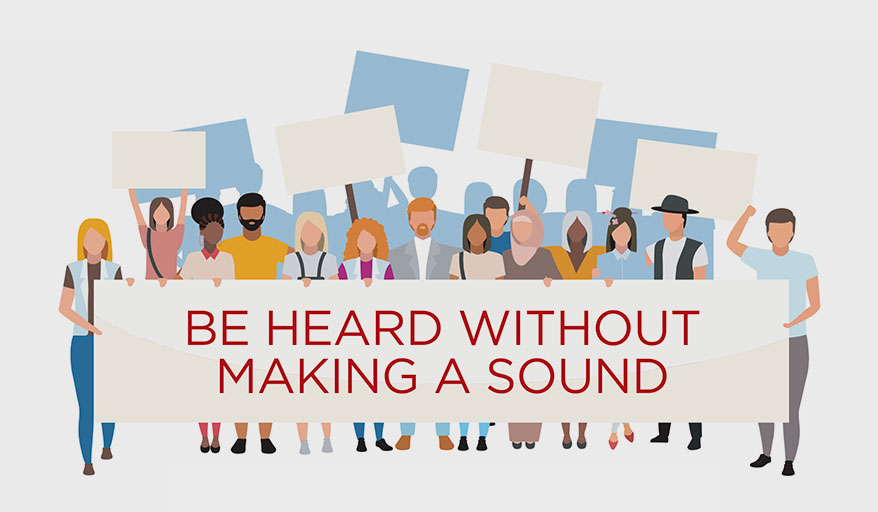YOU CAN’T TURN on the TV in the United States right now without seeing some sort of protest. It’s no secret that many Americans are upset, and they’re taking to the streets to stand up in favor of human rights, racial justice, gender equality, and other causes that matter to them. Many of these protests make the evening news (and social media) because they “make good television.” After all, thousands of people chanting in the streets is a fairly striking visual. But even in the middle of loud public gatherings, some of the most memorable images are completely silent: signs, shirts, and stickers.
It’s somewhat ironic that in a digital age, printed materials are still not only relevant, but even transformative. If you look at news footage of the Civil Rights marches from the 1950s or the anti-Vietnam War protests a decade later, you will be struck by the number of signs. That was how people expressed themselves in public long before Twitter and Facebook were even a gleam in our eyes. Signs and shirts with messages on them were how protesters got noticed. Social media may not have existed back then, but organizers knew that getting a picture of a protestor carrying a sign into a newspaper or magazine (and especially television news) was an effective way to be heard. More than 50 years later, that’s still the case.
This is where custom printing is playing a vital role in helping activists cut through the clutter and get the visibility they desire. Thanks to major advances in printing technology, it’s possible for them to create striking images that have a major effect on public perception of important issues.
Let’s start with T-shirts. Back in the day, screen printing technology made it impractical to do a small run because set-up times were so tedious. That’s why minimum orders had to be quite large, which was both expensive and impractical for protesters who wanted to get their messages seen. As a result, a lot of the photos we see of protests from the 1960s and ’70s featured people wearing shirts with hand-drawn slogans on them. It may have been an inexpensive approach, but it certainly lacked the “professionalism” that savvy organizers desire. Custom printing has come a long way, and today it’s easy to get any number of shirts printed. In fact, if you watch footage of protests in 2020, you will see a large number of people wearing customized shirts they’ve designed for themselves and their friends.
The same is true for stickers. For a long time, people didn’t have the option of ordering small quantities because it took so much work to get the presses ready. That’s not a problem if you’re ordering thousands of stickers, but the costs per unit for small runs were prohibitive. No one wants to spend $20 on a single sticker! Again, new technologies have eliminated this barrier, and people can literally order one sticker without breaking the bank. If you walk around any major metropolitan area, you will see amazing, professionally designed and produced stickers created and posted by individuals. In many cases, these are actually custom, small-run jobs.
For decades, political organizers and activists have known “the medium is the message.” It’s not enough to just take a stand: you also have to be seen. Thanks to striking visuals on shirts, stickers, and signs, they can get noticed. And thanks to new screen printing technology, they can do it on a scale and budget that works for them.
Advertisement
Interested in learning more from Witkin? Visit his company’s website: stickeryou.com.


 Case Studies2 months ago
Case Studies2 months ago
 Art, Ad, or Alchemy2 months ago
Art, Ad, or Alchemy2 months ago
 Andy MacDougall2 months ago
Andy MacDougall2 months ago
 Columns4 weeks ago
Columns4 weeks ago
 Editor's Note3 weeks ago
Editor's Note3 weeks ago
 Marshall Atkinson3 weeks ago
Marshall Atkinson3 weeks ago
 Case Studies4 weeks ago
Case Studies4 weeks ago
 News & Trends2 months ago
News & Trends2 months ago
















